Nationality British Role Artist | Movies Self Made Name Gillian Wearing | |
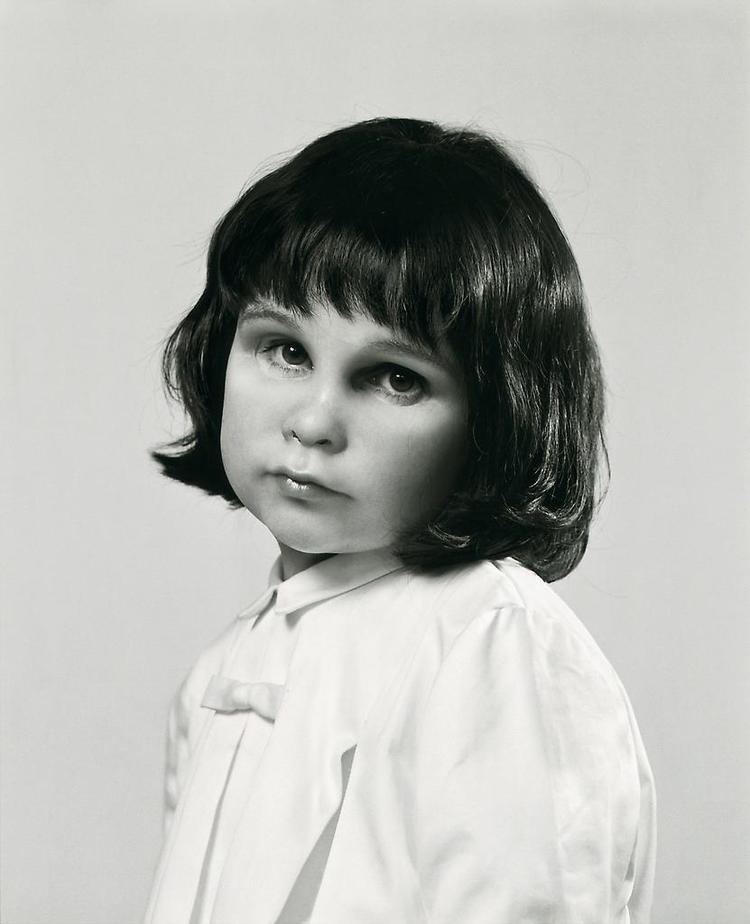 | ||
Periods Conceptual art, Young British Artists Artwork Signs that say what you want, A Real Birmingham Family, Sixty minute silence, We as Warhol in Drag with Similar People Michael Landy, Leo Butler, J M W Turner, Lisa‑Marie Russo, Tim Woodward | ||
your views by gillian wearing
Gillian Wearing OBE RA (born 1963) is an English conceptual artist, one of the Young British Artists, and winner of the annual British fine arts award, the Turner Prize, in 1997. In 2007 Wearing was elected as lifetime member of the Royal Academy of Arts in London.
Contents
- your views by gillian wearing
- Gillian wearing and claude cahun behind the mask another mask
- Early life
- Art practice
- Signs that say what you want them to say and not Signs that say what someone else wants you to say 1992 1993
- Mask
- Turner Prize Award
- 1990s
- 2000s
- 2010s
- Award
- Personal life
- References
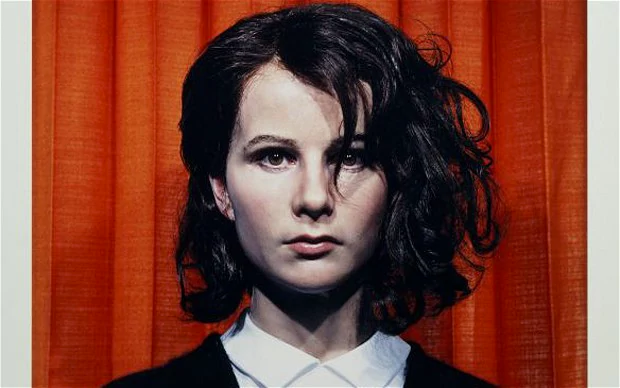
Gillian wearing and claude cahun behind the mask another mask
Early life
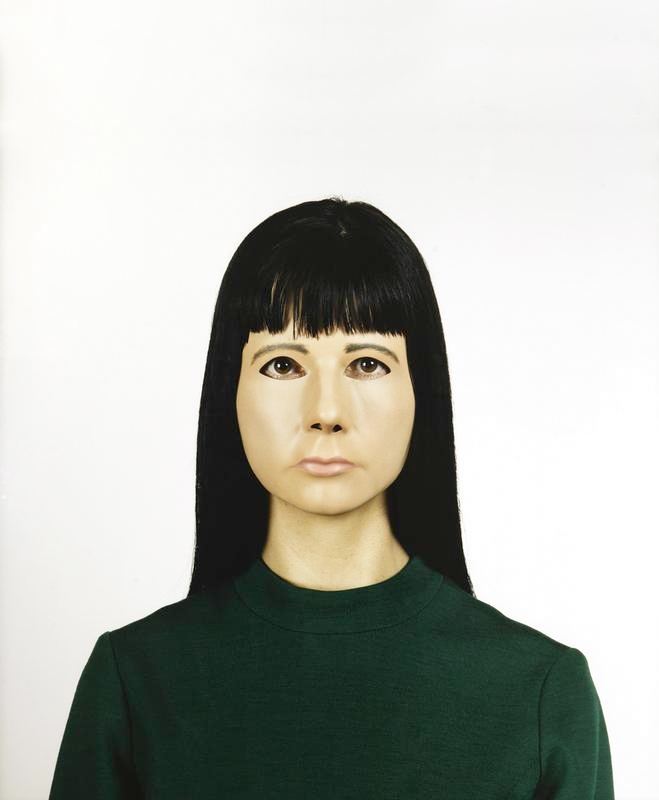
Wearing was born in Birmingham. She attended Dartmouth High School in Great Barr, Birmingham. She moved to Chelsea, London to study art at the Chelsea College of Art and squatted in Oval Mansions.
Art practice

Gillian Wearing is known for her method of documentation of everyday life through photography and video, concerning individual identity within the private and the public spaces, where Wearing blurs the line between reality and fiction. Through a method of representation where as John Slyce describes Wearing representation as "frame[ing] herself as she frames the other" Her photo and video works at first appear like any other journalistic methods of documentation that is seen in television and documentaries, but after further examination it becomes apparent that they do not conform to mass-media conventions. Wearing’s work reveals the fact that the camera does not take a neutral stance, but a powerful mass-media organ that breaks down the public and the private. In the early 1990s, Wearing started putting together photography exhibitions where she works with strangers. There is a reoccurring pattern in her work where she plays and mocks the idea of the artist as anthropologist and that her anthropological activities do not focus on discovering a foreign culture but instead Wearing challenges what we thought we already knew. Wearing sees that Anthropology ‘attempts to compress human subjectivity into scientific objectifity’ As John Slyce puts it: “Gillian Wearing does not suffer the indignity of speaking for others.”.” How Wearing approaches her subjects then is by inviting the individual to include their own articulation of thought into the picture within the space that she has provided, rather than an objective documentation. In an interview with Donna De Salvo, Wearing states:
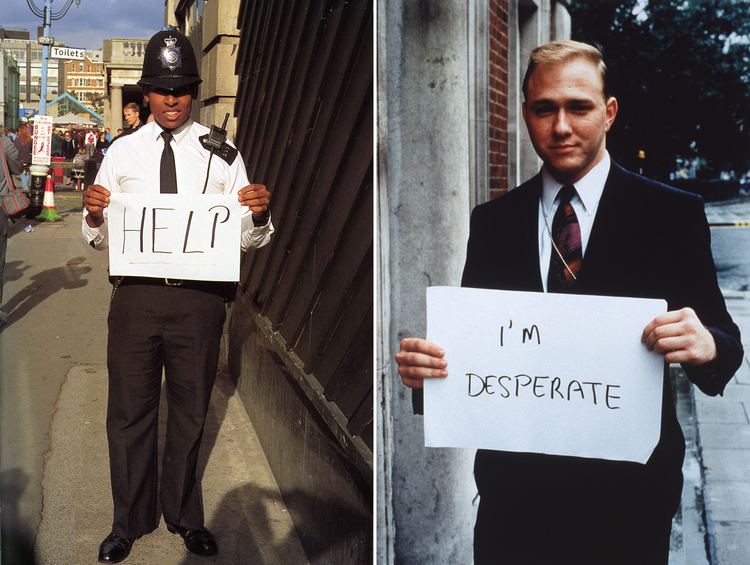
“For me, one of the biggest problems with pure documentary photography is how the photographer, like the artist, engineers something to look like a certain kind of social statement—for instance, you can make someone look miserable, when this is just one side, a nuance of their personality. They might just be looking away at something, but their expression could be read as showing a kind of depression in their overall behavior. I couldn’t bear the idea of taking photographs of people without knowing.”
Signs that say what you want them to say and not Signs that say what someone else wants you to say (1992-1993)
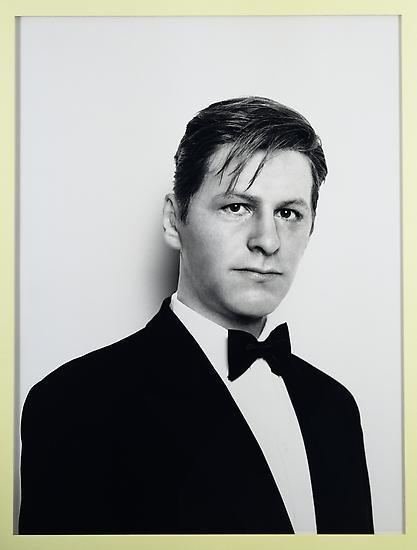
In her piece Signs that say what you want them to say and not Signs that say what someone else wants you to say (1992-1993), Wearing made a series of portraits where she approaches strangers that she encounters on the street and asks them to write what they are thinking about on a white sheet of paper. Wearing enjoyed this method of photographing because “when they returned with something they had written, it challenged [her] own perception of them.” The photographed subjects that are from different backgrounds becomes unified through this paper where ‘all of a sudden you have to start re-appraising people.’ The audience’s fantasies of imposing their own interpretations onto these photographed subjects are challenged and redirected by the paper that they are holding. This exchange between Wearing and the people she photographs makes the interaction more conversational rather than typical documentation methods of portrait photography.
Mask
In Russel Ferguson’s “Show Your Emotions” he draws Wearing’s use of mask draws to an older tradition that runs back to at least as far as classical Greek tragedy: “One in which the mask functions not so much to substitute on identity for another as to obliterate the superficial aspects of physical appearance in order to reveal more fundamental truths.”.” In Confess all on video. Don’t worry you will be in disguise. Intrigued? Call Gillian (1994) is a 30-minute long video where Wearing recruited strangers through posting an ad in Time out magazine and provided a space where participants would confess their terrors and fantasies to the camera, their identity protected by costume masks. The mask is a reoccurring device in Wearing’s work and it functions as protection as well as an apparatus that empowers the wearer; by making their identities anonymous it allows them to express their identity without constraint. As the viewer, access to truth becomes dislocated. Wearing presents this fictitious nature of the work as a report. The use of masks also questions authenticity and how reality can be fabricated. as said by Doris Krystof:
“Protected by masks, protected by their anonymity and protect by the free realm of art where their confessions are recorded but not judged, where there are no consequences to fear, no ideology or attempted appropriation to deal with, the participants could enjoy a sense of liberation and trust in their own voices.”
Trauma (2000) is a further exploration of confessing with a mask. The eight participants confess their trauma and the mask that is given reflect the age of when they suffered their trauma, with the intention of transporting the viewer back to ‘the defining moment in the wearer’s lives.’ What’s intriguing about this piece is that it seems like that it’s not the first time that the participants have told their story because of how well rehearsed it looks. But that’s not the case, it might be that they have been reciting the trauma that they have experienced in their heads over many years.
In Homage to the woman with the bandaged face who I saw yesterday down Walworth Road (1995) Wearing covers her head with white bandages and walks around in public. This piece materialized after Wearing caught a glimpse of this woman who she saw with the bandaged head while in her friend’s car. Wearing initially wanted to ask for permission to film the woman, though she decided to cover her own face with bandages and reenact what she has seen instead. Her walk was documented discreetly from behind and there was a hidden camera installed inside of the mask, capturing onlookers’ horrid reactions. Krystof Doris contextualizes Wearing’s approach: “The relationship between observer and observed is first establssished, then reversed, but always recounted from the perspective of the artist.” In 2003-2006, Gillian Wearing recreated photographs of her relatives that were found in her family album. She created masks out of silicone of her mother, her father, her sister, her uncle, and a mask of herself with help from experts that were trained at Madam Tussauds in London. They start the mask in clay from a two-dimensional image into a three-dimensional object. In an article for The Guardian she explains that the process takes four months per mask, and how at first ‘some people tried to direct me to use prosthetics, but I was adamant it had to be a mask, something that transforms me entirely, something that was not grotesque but real, like a trompe l’oeil.’ These expensive silicone masks deteriorate easily after use, turning the photo shoot into a performative act where the action is unrepeatable. This process becomes paradoxical because of the difficulties that are encountered while recreating these casual snapshots. This work references into the canonical work in the history of photography of Cindy Sherman, though Wearing has shifted the focus in to exploring her own persona and its underlying relationships as social construct. The works in Album then do not necessarily put the family members as the main focus; rather they capture Wearing’s engagement with the family members.
Turner Prize Award
60 Minutes Silence (1996) is the piece that won Wearing the Turner Prize Award in 1997. Wearing used a fixed camera and the length of the pose was long in duration, which resulted in an awkward personal moment. At first the image appears like a backlit group portrait of British police officers but after further examination the slight movements that they make reveals that it is in fact a video. In Krystof Doris’ text “Masks, Identity, and Performativity” he explains that the power relation between the viewer and the viewed (the police officers) are reversed due to the disciplining scenario that Wearing placed upon the group of police officers. The individuality of each member begins to assert itself as the recording goes on and the officers conclusively becomes “ordinary human beings”.
1990s
In the early 1990s, Wearing started putting together photography exhibitions that were based around the idea of photographing anonymous strangers in the street who she had asked to hold up a piece of paper with a message on it. Of these "confessional" pieces, Wearing stated,
I decided that I wanted people to feel protected when they talked about certain things in their life that they wouldn’t want the public that knows them to know. I can understand that sort of holding on to things—it’s kind of part of British society to hold things in. I always think of Britain as being a place where you’re meant to keep your secrets—you should never tell your neighbors or tell anyone. Things are changing now, because the culture’s changed and the Internet has brought people out. We have Facebook and Twitter where people tell you small details of their life.
One of Wearing's first UK shows was held at the Chisenhale Gallery in east London, in June 1997.
In 1997, Wearing won the Turner Prize and exhibited videos such as 60 minutes silence which is a video of 26 uniformed police officers, but at first appears to be a photograph. Wearing said, "The piece is about authority, restraint, and control." She also exhibited Sacha and Mum showing emotions between a mother and daughter. Wearing described the piece as, "Things can not be finalized—- as far as emotions are concerned. They’re always in turmoil and can go to two polar opposites." Cornelia Parker, Christine Borland and Angela Bulloch were the other shortlisted artists.
In the late 1990s Wearing made a three-channel video called Drunk (1997-1999), for which she filmed a group of street drinkers who she had got to know outside her studio against the backdrop of a white photographic backdrop. The drinkers are shown in different scenes individually and in groups. They stagger around, fall over, bicker, fight, sleep and in the end scene one of the men stands against the backdrop and urinates.
2000s
In Wearing’s Broad Street (2001), she documents the behavior of typical teenagers, in British society, who go out at night and drink large amounts of alcohol. Wearing shows teenagers partying at various clubs and bars along Broad Street, Birmingham. Wearing follows these teenagers demonstrating how alcohol contributes to their loss of inhibitions, insecurities, and control.
In 2003, Wearing caused controversy with her cover for The Guardian's G2 supplement, consisting solely of the handwritten words "Fuck Cilla Black". The cover illustrated an article by Stuart Jeffries complaining about the cruelty of modern television.
The themes of modern television were further explored in Wearing's project Family History (2006) commissioned by Film and Video Umbrella, and accompanied by a publication on the project.
2010s
Wearing's 2010 show People (2005–2011) at Tanya Bonakdar Gallery included work ranging from video, to photographic portraiture, to installation and sculpture. Snapshot (2005) is a series of seven single-projection videos framed by a candy-colored array of plasma screens, each depicting different stages of the female life cycle—from the innocence of early childhood to old age.
Wearing was appointed Officer of the Order of the British Empire (OBE) in the 2011 Birthday Honours for services to art.
In 2012, a major retrospective of her work was held at Whitechapel Gallery, London (March–June 2012), which surveyed her career and premiered new films and sculptures. The exhibition was organised with Kunstsammlung Nordrhein-Westfalen, Düsseldorf and supported by Maja Hoffmann, Vicky Hughes and John Smith, and Dr Naomi Milgrom AO. An accompanying monograph was published by Ridinghouse and included texts by curator Daniel Herrmann, Doris Krystof, Bernhart Schwenk and David Deamer.
In 2013, Wearing showed her exhibit People: Selected Parkett Artists' Editions from 1984–2013 Parkett Space, Zurich, Switzerland (9 February-11 March 2013)
On 30 October 2014 her sculpture A Real Birmingham Family was unveiled in front of the Library of Birmingham.
Award
Personal life
Wearing lives and works in London with her partner, British artist, Michael Landy.
